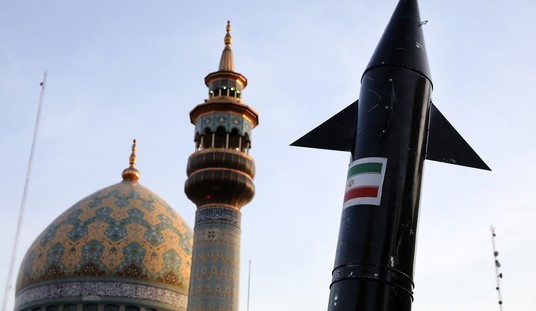The story goes that when Walt Disney and other company executives toured the land that would become Walt Disney World, Walt spotted a relatively unspoiled looking island in the middle of Bay Lake that fascinated him and inspired him to develop the first phase of his Florida Project on that corner of the land. This little island went on to play a unique role in the history of Walt Disney World, not just for the attractions that made the island their home for 25 years, but especially for what it inspired. That island was Discovery Island.
In his excellent (but, sadly, out of print) book Since The World Began, Jeff Kurtti retells the history of what would become Discovery Island:
From 1900 to 1937 it was called Raz Island after the family that lived and farmed on it. In the late 1930s Delmar Nicholson (known as Radio Nick) purchased the island for $800 to make a home for his family. Radio Nick was an outdoorsman, botanist, civic leader, and Florida’s first radio disc jockey. For more than 20 years, Nick, his wife, and their pet sandbill crane lived on the island, which Nick called Idle Bay Isle. Nick and his wife grew many varieties of fruits and greenery, which they sold to local markets. Ill health forced Nick to sell the island, and a group of local businesspeople purchased it as a hunting retreat. Disney purchased the island in 1965.
The island was unique among the features of the land at Walt Disney World in that it was not man-made. Walt wanted the island to have a pirate theme, and it opened in April 1974 as Treasure Island. DisUnplugged takes us on a tour of Treasure Island as it stood 40 years ago:
Guests would arrive by boat to Jolly Roger Wharf and going counterclockwise, would first come upon Cap’n Flint’s Perch, where a number of birds including parrots and macaws could be seen.
Down the path was Buccaneers’ Cove, where animal presentations would take place. Guests would then pass through the North Inlet on their way to Lookout Point. Explorers would cross Black Dog Bridge and round the bend to Doubloon Lagoon and then Mutineer Falls. Further down was Dead Man’s Island, Skelton Island, and then the Skelton Lair. Reaching the northeast corner of the Island guests would come up to Skelton Lair and further down the path was Buccaneers’ Roost. At this point guests would come to a forked path, heading right they would pass Black Dog Swamp and Cape of the Woods. As they headed to the north end of the island guests would come upon the wreck of “The Walrus” and then Scavenger Beach. Heading towards the southwest end was the beautiful and lush Flamingo Lagoon, then Rum Point, the Touchan Cage and the Mizzen Mast. Finally, working back towards the Jolly Roger Wharf was the Mates and Maidens, “Ye olde reste rooms,” as described by Disney.
[…]
Treasure Island was intended to be a low-keyed, relaxing quarter or half-day diversion from the hustle and bustle of the Magic Kingdom. Ironically, that was one of the biggest reasons why it never caught on and eventually led to its demise.
Disney closed Treasure Island in January 1976 for an extensive refurbishment. The pirate theme went away, and the company considered putting honeymoon cottages on the island. Finally, the Imagineers looked to the diverse wildlife that lived there as a theme, and named it Discovery Island. DisUnplugged picks up the tale:
The new additions included a 320-foot by 102-foot aviary that was 40-feet high and included an elevated boardwalk, The CooCoo Cabana, home to the Jose Carioca Flyers bird show, Turtle Beach, a specially designed Flamingo Pool, The Thirsty Perch snack bar, among other attractions.
[…]
When Discovery Island was unveiled to the public, guests found a rich and lush tropical island with not only a diverse botanical environment, but also an extensive habitat of wildlife including flamingos, pelicans, bald eagles, primates, alligators, peacocks, swans, and much more. They were the first in the world to breed in captivity the Toco Toucan, at that time, an extremely breed of Toucan. Discovery Island was also the home of more than 140 different species of animals, many of which were on the verge of extinction.
Guests could arrive at the island by boat from the Contemporary Resort or Fort Wilderness. Discovery Island required separate tickets, though later on it was an option that guests could add to Park Hopper tickets. Disney took seriously its responsibility for taking care of the wildlife there, and Discovery Island received numerous awards. In 1981, the American Zoo and Aquarium Association granted accredited zoo status to the island park.
Discovery Island was a nice little diversion, particularly for guests staying at Fort Wilderness or the resort hotels along the Magic Kingdom Monorail Loop nearby. Growing up, we visited Discovery Island a couple of times, and – even though I’m not an animal person – I found the diversity and beauty of the wildlife breathtaking. The island conjured up memories of one of my favorite Disney films, Swiss Family Robinson. Unfortunately, Discovery Island did not catch on as a favorite attraction for many guests.
The park experienced its share of controversy. In 1989, the state of Florida investigated Discovery Island over the death of five vultures. That September, the state filed charges against Curator Charlie Cook and four other employees, as well as against the Walt Disney Company itself. DisUnplugged:
In a story on September 24, 1989, Bob Levinson, a writer for The Orlando Sentinel, reported, “A state report concluded that ‘many of the employees at Discovery Island carried out illegal activities at the direction of curator Charlie Cook’ and that the workers ‘were acting with the understanding that those activities were legal and authorized under Walt Disney World permits.’”
Disney was also in danger of losing their accreditation from the Association of Zoological Parks and Aquariums.
Five days later, Charlie Cook was relieved of his duties on Discovery Island and transferred to a job in another area of the resort. In his place, Patricia Harden was names as interim manger for Discovery Island. At the time, Ms. Harden was a board member of several environmental agencies, including the Orange County Audubon Society.
The Walt Disney Company, which claimed the employees were trying to relocate the birds… with unfortunate results, pleaded not guilty and eventually agreed to settle the case out of court. Disney also instituted a number of sweeping policies and physical changes to the Island. They were permitted to keep their accreditation.
In 1995, Disney CEO Michael Eisner announced plans to build another theme park, which the company named Disney’s Wild Animal Kingdom. The park – whose name would later change to Disney’s Animal Kingdom – drew heavily on Discovery Island for inspiration. Yet, sadly enough, the company announced Discovery Island’s closing less than a year after Animal Kingdom opened. A spokesperson made the bittersweet announcement.
“Our guests have so many more choices. And they are choosing other things,” said Diane Ledder, a Disney spokeswoman. “It’s a little bit sad when we say goodbye to an old favorite, but change is part of the process.”
Discovery Island closed on April 8, 1999, 25 years to the day of its original opening as Treasure Island.
Disney’s Animal Kingdom shares much of the same spirit as Discovery Island. The emphasis on keeping animals in as natural a habitat as possible remains, as does the attention to care for endangered species. While we can’t say for certain that Disney’s Animal Kingdom would not exist without Discovery Island, it’s entirely possible that the park would not be the same without the experiences and lessons learned on that little island in the middle of Bay Lake.









Join the conversation as a VIP Member